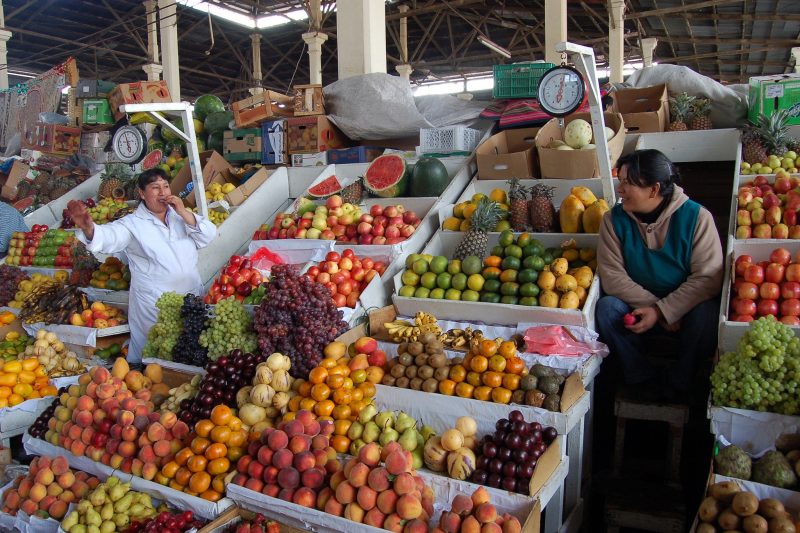Taste, waste, and sustainability in Peru
Peru's restaurant industry is starting to grapple with sustainability. FNI's Leslie Forsyth offers some food for thought.

Peru is recognized as one of the world's top gastronomic kitchens. The mix of cultural heritage, different geographic regions and rich biodiversity has set the plate for the reinvention of Peruvian cuisine, creating a food revolution with considerable social and economic impacts. But is this revolution also working towards sustainability?
When thinking about restaurants, consumers usually only see the front stage: flavors, experiences, pleasure. However, there is a backstage in the gastronomic process that is crucial for its survival: sustainability. A sustainable restaurant should operate in ways that protects and restores natural resources, promoting social equity in the different communities it is involved.
Sustainability comes with a focus beyond customers, investors and owners; all the parties affected by the business, including suppliers, employees, community members and recyclers have to be considered and taken into account. By engaging stakeholders, a sustainable restaurant will contribute to a good environment by promoting respect for local culture, as well as economic prosperity. Another important factor is designing a seasonal menu by using available local ingredients in order to avoid the consequences of importing most ingredients around the world, generating “food miles” and more emissions of carbon dioxide. This will promote creativity around the kitchen staff and also engage costumers to consume local food and respect breeding seasons.
In the Peruvian gastronomic reinvention, there are good examples of initiatives which have emerged demonstrating the different platforms that operate beyond the kitchen’s restaurants. The approach towards food and eating has changed, giving respect and recognition to every element in the experience of eating.
“ The Amazon is recognized as one of the most important biodiversity in the world, with thousands of species of plants, fish and fruit, but it faces different threats as unsustainable economic activities drive deforestation.”
Central, one of the top ten restaurants in the world, is a Peruvian restaurant that through its chefs Virgilio Martinez and Pia Leon has widely integrated the concept of sustainability into its core business. The owners of Central decided to make a step forward and create the Mater Initiative, a biological and cultural research center which works closely in the development of Central dishes. Every month Mater’s research group travels around Peru in order to discover new ingredients, develop strong bonds with local communities and learn from those communities how to use the ingredients found.
In the same line, they have created Mil, a restaurant located in Cusco. Unlike Central which offers a variety of food and ingredients of all Peru’s ecosystems, one of the main missions of Mil is to display the richness of the ingredients and gastronomical knowledge of the Andes. They have established strong relationships with local communities in order to learn about the components of Andean dishes. For dinner guests, Mil offers the experience of how food is being created from harvest. Central’s next challenge is to open a restaurant in the Amazon practicing the same strategies.
The constant search for new ingredients for a healthier diet has put the Amazon rainforest in the spotlight. The Amazon is recognized as one of the most important biodiversity in the world, with thousands of species of plants, fish and fruit, but it faces different threats as unsustainable economic activities drive deforestation, affecting rivers, animals and native communities that depend on those ecosystems. Governments and multiple organizations are taking action to stop deforestation and its consequences. A good opportunity for the protection of the Amazons and its wealth appears through restaurants, delivering the Amazon to diners and new audiences will promote the importance of the Amazon, not only as a forest but also as a rich world to protect.
Cumari is one of the gastronomic initiatives developed under the umbrella of sustainability. This initiative promotes Amazonian ingredients, flavors and traditions through influential chefs in city restaurants, facilitating links between conservation, finance and industry stakeholders in order to generate value.

Pedro Schiaffino is the chef and owner of Amaz, a restaurant which is part of this initiative. Its menu displays all the richness of the amazon biodiversity, 80% of its ingredients come directly from the Amazon periodically. The materials used also respect the environment, it is the first restaurant to have the FSC certification for the wood used in its implementation, which means the wood comes from certificated forests which grows trees in a sustainable way.
Schiaffino learned how to use ingredients and prepare dishes due to his close relationship with local Amazon communities. In order to respect local communities' social and cultural traditions, Amaz has developed sustainable supply chains to support local production. This improves local economies as well as helping them revalue their surroundings: by protecting the forest and using it in a sustainable way, positive economic and environmental results will appear.
Another important issue is food waste. Restaurants generate a lot - but what happens to the leftovers? Raising awareness on these issues is one of the first steps to encourage restaurants to become sustainable and find solutions for food losses and leftovers. According to the FAO, 20% of the world’s food production is discarded, with 310 billion dollars worth of food are wasted every year in developing countries.1 Food waste is a major environmental problem as it represents a waste of resources, water, energy and land used in this production, generating greenhouse gas emissions and thus contributing to global warming.
“ Indigenous communities in the Andes and the Amazon have developed local knowledge throughout the centuries in order to make the most out of the environment and its resources in a sustainable way.”
A creative solution for food waste in Peru is SINBA, an organization that through its program “Gastronomy #sinbasura”, designs a segregation system for restaurants residues. According to SINBA, Peruvian restaurants generate between 40 and 500 kilos of waste every day, 75% of which is organic waste, most of it from leftover food. Only 4% of this waste is recycled.
But SINBA collects waste food from restaurants and transforms them into “PUNBA”, healthy pig’s food, through a biotechnological process, recovering nutrients. PUNBA is then delivered to associated pig farms generating a positive impact. By being part of this program, restaurants can reduce their environmental impact up to 90%. Thanks to SINBA, so far 286Tn of organic waste has been recovered, preventing 438Tn of Carbon footprint production. An added benefit is that by working with recycling workers associations, SINBA helps them achieve a more formal and dignified employment, generating a positive impact in the community.
Peru is a country with many gaps regarding inequality and social exclusion issues. Indigenous communities in the Andes and the Amazon have developed local knowledge throughout the centuries in order to make the most out of the environment and its resources in a sustainable way. Despite this knowledge, most of the communities continue to live in poor conditions. It is important that every possible effort is made, to incorporate these groups to the economic and productive chains of gastronomy through new opportunities and recognition, as they are key elements in this gastronomic boom. Chefs and customers should support and encourage initiatives such as Central, SINBA and Amaz, promoting ethical eating and enriching the experience of eating for everyone involved.
- Leslie Forsyth, Executive Director, FNI
Image: "Étal de fruits, Mercado central San Pe" (CC BY-SA 2.0) by manumenal


